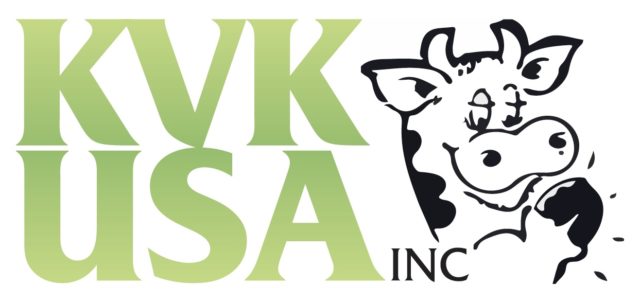The story of American agriculture includes a history of volatility, perhaps more so than some other major farming countries. Although Thomas Jefferson helped found the republic on the idea that farmers were the chosen people to embody national ideals, it wasn’t long before the same farmers came under threat by large companies, the merchant class and unfavorable financial conditions. Nonetheless, also part of this story are the groups created in response by farmers coming together to change their circumstances. One such organization was the Farmers’ Alliance in the late 1800s.
The Farmers’ Alliance was the eventual result of simultaneous agricultural crises in the U.S., one of which occurred in the Plains and Midwest. In order to help create the first transcontinental railroad, the U.S. government gave 129 million acres of public land to the major railway companies, who then sold most of it to fund construction. Previously, land west of the Missouri River was considered poor for farming, but a great advertising push by the railway companies lured millions of people west. Entire towns and counties sprang up almost overnight.
During the migration to states like Kansas, Nebraska and Colorado, the area experienced unusually rainy weather that was a boon to crops. However, a lengthy drought beginning in 1887 caused crops to fail and land prices to plummet. Eastern companies stopped investing in the west, eventually leading to the collapse of most banks. Many people moved back east and those that stayed, including the farmers, faced a difficult decade ahead.
During this period, the South faced their own unique problems. After the Civil War ended in 1865, the plantations of the antebellum South could not survive the lack of free labor it had sequestered under slavery, and those who invested in slaves or Confederate bonds saw their wealth disappear. Tumbling land prices further weakened the gentry and, with credit hard to secure, many estates broke up. From this emerged the sharecropping system.
Most sharecroppers were newly liberated Black farmers who had very little capital or savings, but it also included poorer white farmers. In theory, sharecropping should have benefited both the tenant farmer, who could not afford land, as well as landowners who could make a profit from their holdings without paying a wage. Every year, the landowner would receive a portion of the crop produced or a percentage of the sales. However, in order to obtain seed, equipment and living essentials, the sharecroppers were often forced to purchase them from the landowners at inflated prices. Because the crops harvested seldom covered the debts incurred, landowners took out a lien on future crops, creating a cycle that never ended. Sharecroppers found themselves in what was essentially another form of slavery and soon grew discontented.
Just as farmers were experiencing varying challenges in different regions of the republic, so did the resistance to these problems coalesce into major consortiums based on geography. In the north, the National Farmers' Alliance, or “Northern Alliance,” began in 1877 and then became effectively active in 1880 under the leadership of newspaper editor Milton George. The National Farmers’ Alliance and Industrial Union, or “Southern Alliance,” began with a group of Texas ranchers. They worked together to apprehend horse thieves but soon expanded into political interests, coalesced with other groups and eventually became the “Southern Alliance.” Because African-Americans were banned from the Southern Alliance, they formed the Colored Farmers' National Alliance and Cooperative Union, shorthanded the “Colored Farmers’ Alliance,” which reached 1.2 million members by 1891.
Although attempts to unify the three branches of the Farmers’ Alliance failed, each group ultimately pressed for similar demands, paramount of which was protecting farmers from the powers of monopolies. They sought government regulation for large firms, such as railroad companies – to which farmers often suffered exorbitant transportation fees in moving their products – as well as reformed income tax policies, dissolving national banks in favor of local banks, the free coinage of silver to combat the effects of deflation, and finally government warehouses to store non-perishable farm products that farmers could exchange for low-interest credit.
Despite being a wide-reaching national organization, most of the Farmers’ Alliance success was local. In the short term, they were able to establish various sorts of cooperatives to help their members, including stores that bought from wholesale retailers and sold to farmers at lower rates. In some places, they owned their own mills and allowed farmers to bring in their products at lower costs, while in other instances they negotiated with cotton brokers on farmers’ behalf, attaining higher prices.
Such success, however, was also short-lived. Brokers and large companies retaliated against the alliance by boycotting the products of their members, and merchants sometimes artificially lowered their prices to drive alliance stores out of business. The alliance also failed to achieve its national agenda and had trouble convincing either the Republican or Democratic Party to take up its demands. The Farmers’ Alliance eventually morphed into The People’s Party, more commonly known as The Populists. While the Populists rose as the first major third party in American politics, its influence essentially dissolved after two presidential elections.
The Farmers’ Alliance wasn’t the first attempt by farmers in America to organize for better political conditions, and it wouldn’t be the last. Ultimately, it didn’t attain major economic reform. However, some historians suggest that what it did accomplish is to create a “movement culture” among the disenfranchised rural population. It demonstrated that it was possible for farmers to organize on a large scale, and that when they did that, they had power. While politics, the country and the nature of farming has changed, the fact that farmers continue to face obstacles has not. One day, the future of American agriculture may depend on the ability to come together and stoke a movement culture once again.







